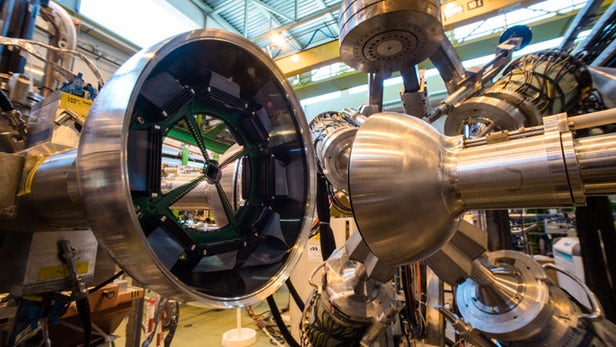
Breaking News
 Battleborn Batteries Responds! Their Overheating Device is a "Feature" not a "Problem
Battleborn Batteries Responds! Their Overheating Device is a "Feature" not a "Problem
 Actor Liam Neeson Outs Himself as MAHA After Narrating Pro-RFK Jr. Documentary Slamming...
Actor Liam Neeson Outs Himself as MAHA After Narrating Pro-RFK Jr. Documentary Slamming...
 Kyle Rittenhouse announced on social media Wednesday that he has tied the knot.
Kyle Rittenhouse announced on social media Wednesday that he has tied the knot.
 JUST IN: President Trump Grants Tina Peters Pardon
JUST IN: President Trump Grants Tina Peters Pardon
Top Tech News
 Build a Greenhouse HEATER that Lasts 10-15 DAYS!
Build a Greenhouse HEATER that Lasts 10-15 DAYS!
 Look at the genius idea he came up with using this tank that nobody wanted
Look at the genius idea he came up with using this tank that nobody wanted
 Latest Comet 3I Atlas Anomolies Like the Impossible 600,000 Mile Long Sunward Tail
Latest Comet 3I Atlas Anomolies Like the Impossible 600,000 Mile Long Sunward Tail
 Tesla Just Opened Its Biggest Supercharger Station Ever--And It's Powered By Solar And Batteries
Tesla Just Opened Its Biggest Supercharger Station Ever--And It's Powered By Solar And Batteries
 Your body already knows how to regrow limbs. We just haven't figured out how to turn it on yet.
Your body already knows how to regrow limbs. We just haven't figured out how to turn it on yet.
 We've wiretapped the gut-brain hotline to decode signals driving disease
We've wiretapped the gut-brain hotline to decode signals driving disease
 3D-printable concrete alternative hardens in three days, not four weeks
3D-printable concrete alternative hardens in three days, not four weeks
 Could satellite-beaming planes and airships make SpaceX's Starlink obsolete?
Could satellite-beaming planes and airships make SpaceX's Starlink obsolete?
CERN scientists get antimatter ready for its first road trip

Antimatter is notoriously tricky to store and study, thanks to the fact that it will vanish in a burst of energy if it so much as touches regular matter. The CERN lab is one of the only places in the world that can readily produce the stuff, but getting it into the hands of the scientists who want to study it is another matter (pun not intended). After all, how can you transport something that will annihilate any physical container you place it in? Now, CERN researchers are planning to trap and truck antimatter from one facility to another.
Antimatter is basically the evil twin of normal matter. Each antimatter particle is identical to its ordinary counterpart in almost every way, except it carries the opposite charge, leading the two to destroy each other if they come into contact. Neutron stars and jets of plasma from black holes may be natural sources, and it even seems to be formed in the Earth's atmosphere with every bolt of lightning.
Studying antimatter could help us unlock some of the Universe's most profound mysteries – but, of course, the Universe isn't giving up those answers easily. Positrons (or anti-electrons) were the first antimatter particles to be observed in experiments in the 1930s, and like regular matter, these antiparticles clump together to form atoms of antimatter.
Antihydrogen atoms were first created at CERN in 1995, but it wasn't until 2010 that scientists managed to trap and study them properly – even if only for fractions of a second. In 2011, researchers managed to hold onto the antimatter atoms for a solid 16 minutes, allowing them to eventually study their spectra to see how they compare to regular old hydrogen.
Nowadays, CERN can readily produce antiprotons in a particle decelerator, slowing them down to be captured in a specially-designed trap. But to really make the most of them, it's time for the volatile substance to leave the nest, and be put to work in other areas of research.

 First totally synthetic human brain model has been realized
First totally synthetic human brain model has been realized Mach-23 potato gun to shoot satellites into space
Mach-23 potato gun to shoot satellites into space

